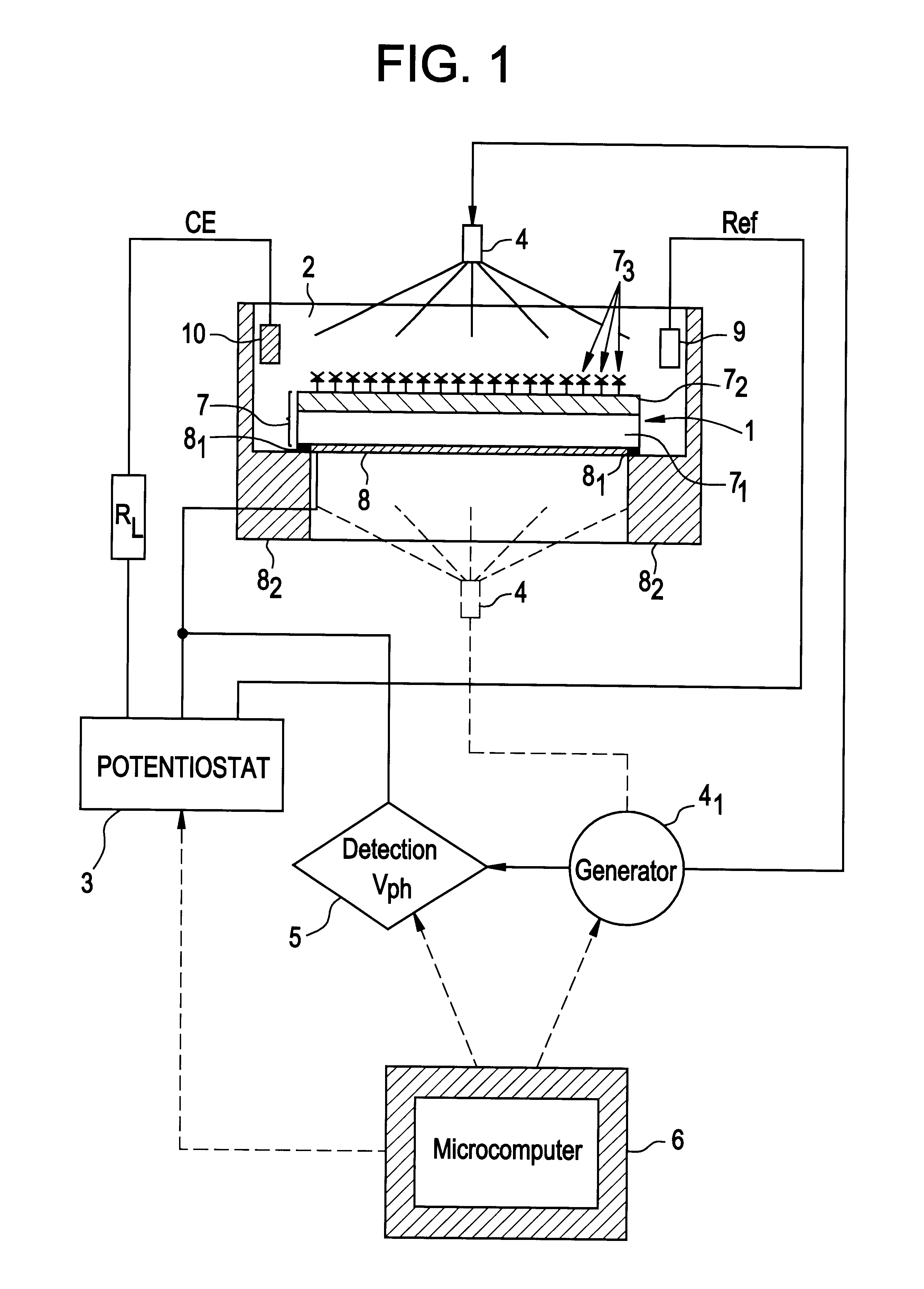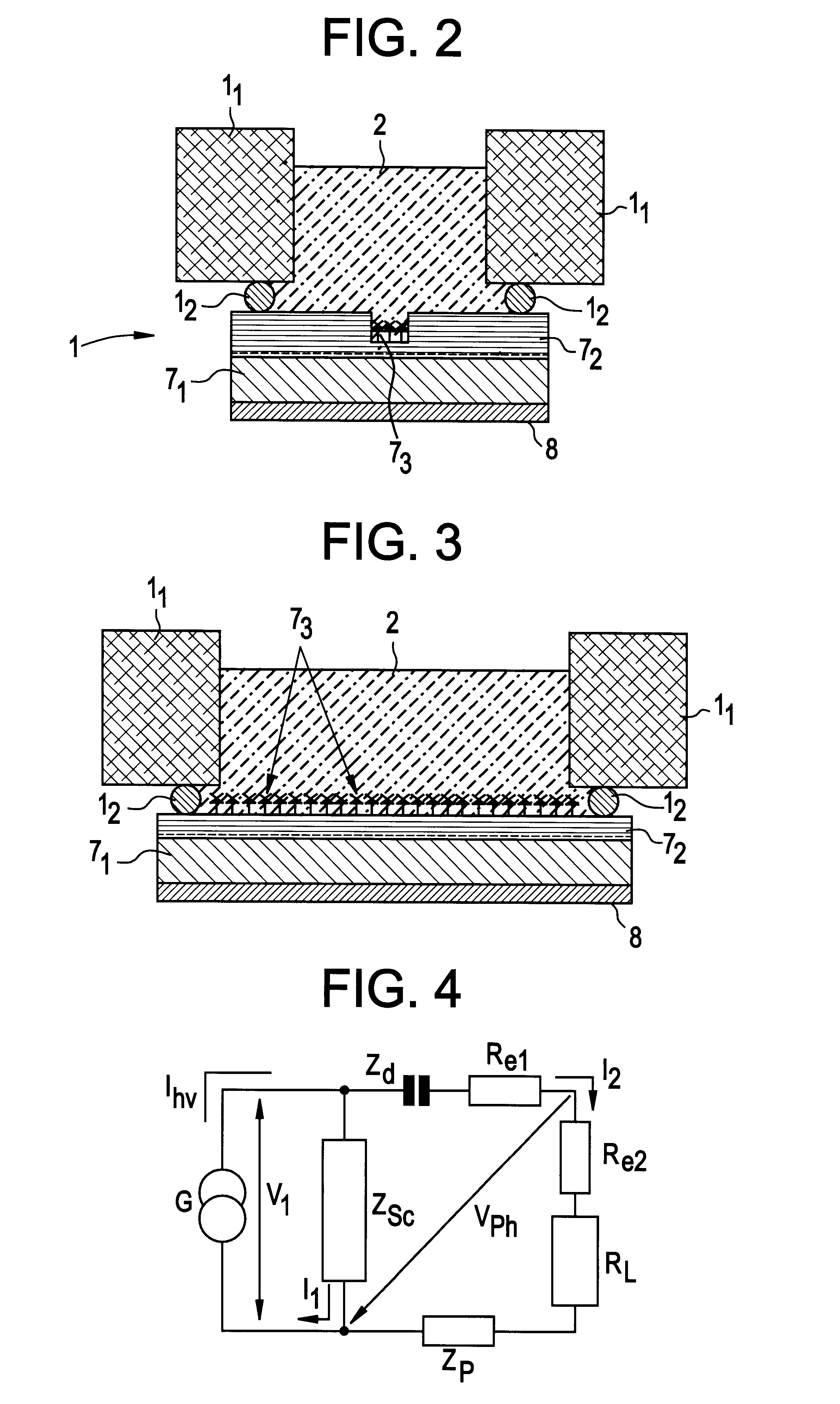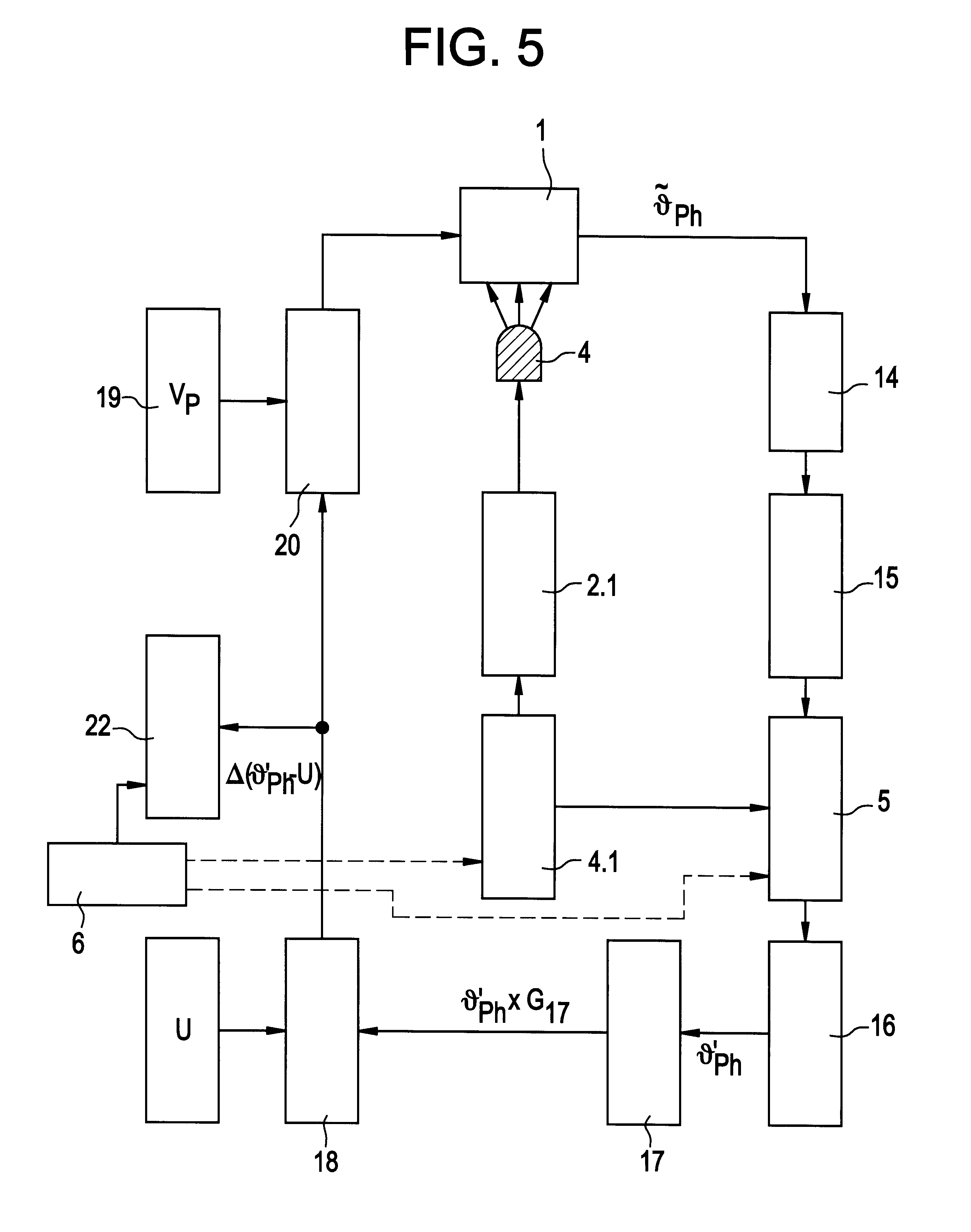Method for identifying and/or analyzing biological substances, present in a conductive liquid, device and affinity sensor used for implementing said method
a biological substance and conductive liquid technology, applied in the direction of liquid/fluent solid measurement, material electrochemical variables, instruments, etc., can solve the problems of inability to continuously measure and even less in vivo measurements, long and complex methods to implement, and inability to use reactants that are not commonly available and expensiv
- Summary
- Abstract
- Description
- Claims
- Application Information
AI Technical Summary
Benefits of technology
Problems solved by technology
Method used
Image
Examples
example 1
MEASUREMENT OF THE OPTOELECTROCHEMICAL IMPEDANCES USING THE DEVICE OF THE INVENTION COMPRISING A STRUCTURE Sc / Is AS BASE ELEMENT OF THE BIOSENSOR
1.1. APPARATUS
The device employed in this example corresponds to that illustrated in FIG. 1.
The structure Sc / Is comprises:
a semiconductor, having a thickness of 0.03 mm, which is silicon p-doped to a level of approximately 10.sup.15 cm.sup.-3 with, on the rear face, an Au / Cr layer providing the ohmic contact,
and an insulator Is, which is silica, having a thickness of 10 nm, obtained by thermal oxidation.
1.2. CONDUCTIVE LIQUID MEDIUM CL: BUFFER SOLUTION, TRIS 1M.
This buffer solution, having a pH of 7.1, is composed of 10 mM Tris-HCl (Sigma) and 50 mM NaCl.
1.3 THE EXPERIMENTAL CONDITIONS ARE AS FOLLOWS:
The frequency of the light modulations is 316 hertz;
The light source is a helium-neon laser emitting illumination at a wavelength 632.8 nm;
The luminous power is 0.6 .mu.W / cm.sup.2.
1.4 RESULTS
The appended FIG. 8 shows the curves of the optoelect...
example 2
APPLICATION OF THE IMPEDANCE MEASUREMENTS ACCORDING TO THE EXAMPLE TO THE BIOLOGICAL DETECTION: PN=DNA (OLIGO dT), 1.sup.ST MODE OF IMPLEMENTATION, WEAK-ILLUMINATION VERSION
2.1 THE DEVICE
The device used, including the structure Sc / Is and the conductive medium CL, is the same as in Example 1 except that the structure Sc / Is is functionalized by probes Pr consisting of nucleotides cPN, complementary to target species PN contained in CL.
2.2 FUNCTIONALIZATION OF THE SURFACE OF THE INSULATOR Is BY PROBES Pr CONSISTING OF 20-BASE dT OLIGONUCLEOTIDES
After hydroxylating the Si / SO.sub.2 surface, a polymeric layer of APTS (aminopropyltriethoxysilane) is deposited. The oligonucleotide strands (dT) are grafted onto the surface by bromination: this method allows the nucleotide to be attached to the APTS without using the sites involved in the hybridization. Finally, the hybridization is obtained after having left the structure in contact with a solution containing poly(dA) strands complementary t...
example 3
ANALYSIS OF POLYNUCLEOTIDES (PN) USING THE DEVICE ACCORDING TO THE INVENTION (FIG. 1), 1.sup.ST MODE OF IMPLEMENTING THE METHOD, STRONG-ILLUMINATION VERSION
FIG. 10 represents the GENOPTRODE V.sub.ph= f(V.sub.b) curve.
PUM
| Property | Measurement | Unit |
|---|---|---|
| wavelength | aaaaa | aaaaa |
| wavelength | aaaaa | aaaaa |
| temperature | aaaaa | aaaaa |
Abstract
Description
Claims
Application Information
 Login to View More
Login to View More - R&D
- Intellectual Property
- Life Sciences
- Materials
- Tech Scout
- Unparalleled Data Quality
- Higher Quality Content
- 60% Fewer Hallucinations
Browse by: Latest US Patents, China's latest patents, Technical Efficacy Thesaurus, Application Domain, Technology Topic, Popular Technical Reports.
© 2025 PatSnap. All rights reserved.Legal|Privacy policy|Modern Slavery Act Transparency Statement|Sitemap|About US| Contact US: help@patsnap.com



